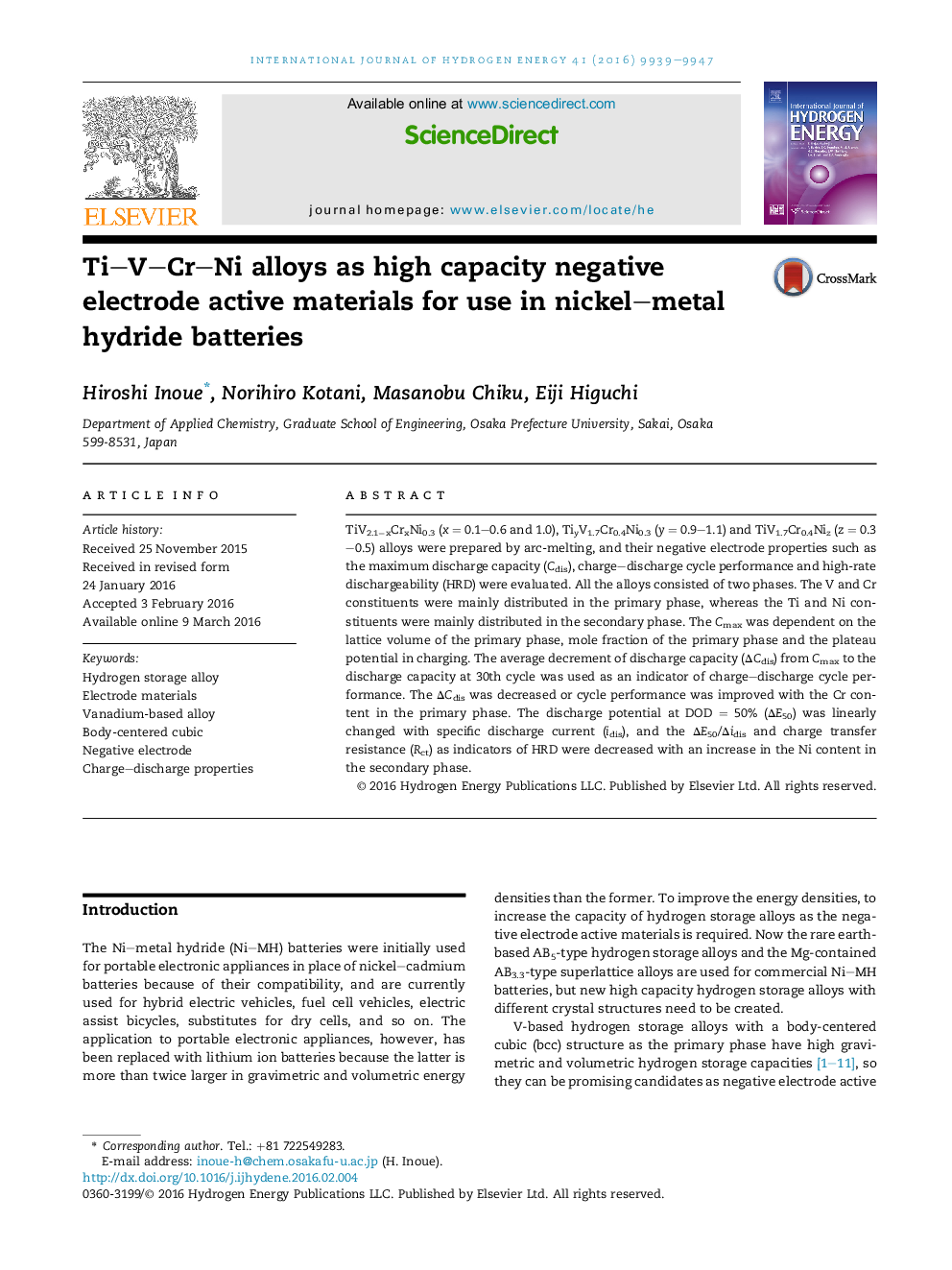| Article ID | Journal | Published Year | Pages | File Type |
|---|---|---|---|---|
| 1277047 | International Journal of Hydrogen Energy | 2016 | 9 Pages |
•All Ti–V–Cr–Ni alloys consist of Ti- and V-rich primary phase and V- and Cr-rich secondary phase.•Lattice volume of the primary phase influences the maximum discharge capacity.•Cycle durability of the alloy electrodes depends on the Cr content in the primary phase.•Their high-rate dischargeability depends on the Ni content in the secondary phase.
TiV2.1−xCrxNi0.3 (x = 0.1–0.6 and 1.0), TiyV1.7Cr0.4Ni0.3 (y = 0.9–1.1) and TiV1.7Cr0.4Niz (z = 0.3–0.5) alloys were prepared by arc-melting, and their negative electrode properties such as the maximum discharge capacity (Cdis), charge–discharge cycle performance and high-rate dischargeability (HRD) were evaluated. All the alloys consisted of two phases. The V and Cr constituents were mainly distributed in the primary phase, whereas the Ti and Ni constituents were mainly distributed in the secondary phase. The Cmax was dependent on the lattice volume of the primary phase, mole fraction of the primary phase and the plateau potential in charging. The average decrement of discharge capacity (ΔCdis) from Cmax to the discharge capacity at 30th cycle was used as an indicator of charge–discharge cycle performance. The ΔCdis was decreased or cycle performance was improved with the Cr content in the primary phase. The discharge potential at DOD = 50% (ΔE50) was linearly changed with specific discharge current (idis), and the ΔE50/Δidis and charge transfer resistance (Rct) as indicators of HRD were decreased with an increase in the Ni content in the secondary phase.
